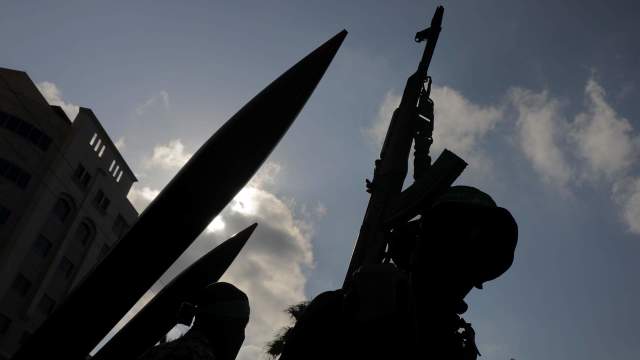Semi-industrial developments often take precedence over high-tech weapons systems
The confrontation between the Israeli armed forces and the Hamas movement is taking place almost throughout the territory of the Jewish state and Palestine. Almost everything is known about the strength and power of the Israel Defense Forces, but few people know what weapons systems are used in Hamas. Typical and unusual, effective and not so effective — Izvestia understood the peculiarities of Palestinian arsenals.
Tunnels under fences
To begin with, a few words about how weapons could get into a limited and closely monitored Israeli enclave. Now the supply of contraband is possible almost through any borders. Especially in conditions when they are engaged in a powerful armed and special services military structure.
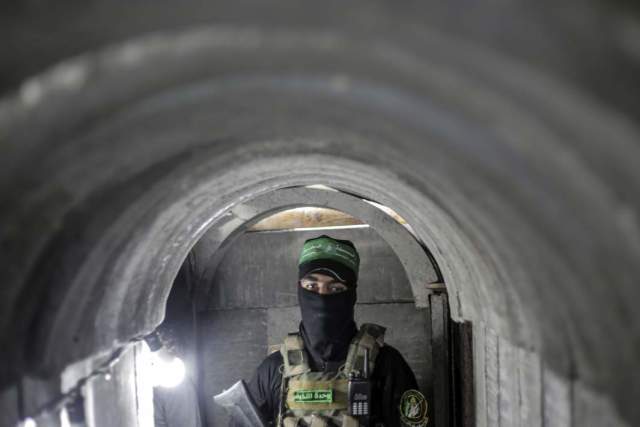
Photo: Global Look Press/Keystone Press Agency
Image source: iz.ru
The Gaza Strip borders Egypt, Israel and is washed by the Mediterranean Sea. Under the border fences, Hamas has a huge network of underground passages. Despite the strict control on the Israeli side, it is likely that some of the weapons entered the Gaza Strip, including transit through its territory. The main arms supply channels, apparently, went through Egypt and from the sea. Of course, some of the weapons systems were assembled or even created from scratch directly in the Gaza Strip.
Qassam Missiles
The calling card and the most powerful offensive weapons of Hamas and the Gaza Strip are surface—to–surface missiles, which are now being launched in huge quantities on Israeli territory. Previously, these were mainly Qassam-type missiles, but today the Palestinians produce and use completely different ammunition with a caliber from 107 to more than 300 mm.
Judging by the footage of the chronicles, Hamas uses factory—made missile systems - for example, Iranian analogues of Chinese multiple launch rocket systems (MLRS) "type 63" with a range of up to 5-8 km, and piece-made missiles such as Quassam-SH or large-caliber Ayyash-250 with a range of up to 80 and even more than 200 km.
Of course, the Palestinians cannot produce large-caliber missiles in huge quantities. They compensate for this with a large stock of small missiles and the fact that they practice their massive use in limited areas of the territory.
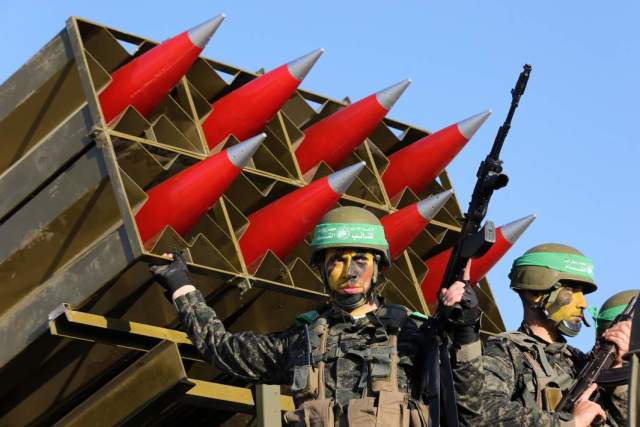
Photo: Global Look Press/Ashraf Amra
Image source: iz.ru
This leads to the information degradation of the Israeli missile defense system Iron Dome ("Iron Dome"). The system begins to miss missiles and, moreover, at some moments of massive attacks, it experiences a shortage of ammunition. Especially when the blow is unexpected and the most defenseless targets are selected.
Iron Dome probably cannot cover all Israeli settlements equally tightly. In addition, Hamas can fire long-range rockets at almost the entire territory of Israel and, as we can see, Iron Dome cannot always prevent such strikes.
Anti-aircraft systems
In some Hamas video chronicles, we see the use of portable anti-aircraft missile systems similar to the Soviet Strela-2 MANPADS on Israeli Apache helicopters. Yes, Soviet MANPADS can still be used in the Middle East. They, as well as their North Korean clones and analogues, were widely used in Syria, Libya and other countries. They turned out to be in the hands of the militants initially from the warehouses of the USSR-allied regimes, where they were supplied in the 1980s.
Most likely, in order to maintain the operability of these complexes, it was necessary to replace the power sources. It may have been necessary to perform some other replacements of the components and parts of the MANPADS. But in the end, relatively combat-ready portable anti-aircraft systems were obtained with not the best capabilities to defeat modern helicopters, which are equipped with both jamming complexes and thermal radiation reduction systems.
But these are quite dangerous defensive systems that definitely have not zero efficiency.
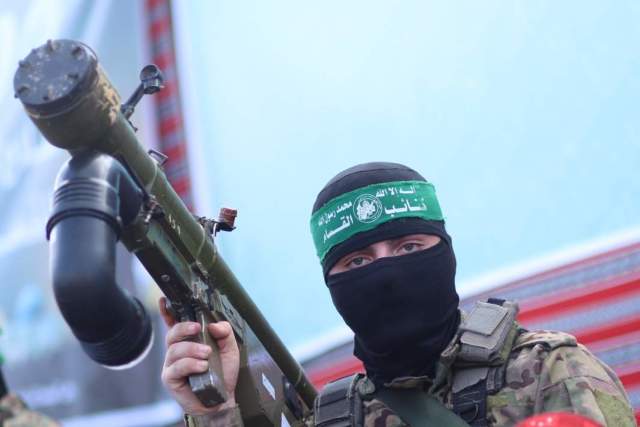
Photo: Global Look Press/Doaa Albaz
Image source: iz.ru
Separately, it should be noted that the Mutabar-1 Palestinian air defense system was shown for the first time in October this year. This is a complex of several remotely controlled single launchers of unguided missiles such as Grad missiles with fuses that ensure their detonation at a certain height.
A group of launchers is remotely guided in the direction and angle of elevation, and in theory, a cloud of fragments should be created by a volley launch at a certain height.
Similar systems were created in Hitler's Germany during the Second World War (the Typhoon complex) and even then it was clear that they could only be effective against group and slow targets — waves of American bombers that raided German targets by the hundreds.
In general, Hamas engineers here apparently created what they could do on their own — they do not have access to missile homing technologies and therefore they had to limit themselves to the Grad anti-aircraft analog. Not effective, but inexpensive and can be used.
Kamikaze Drones
The novelty of this October was also the Zuari kamikaze drones, which were demonstrated in large numbers by Hamas fighters. Apparently, at least 30 such drones were used on targets in Israel in the first days of the confrontation.
Zuari drones are aircraft—type UAVs that are launched from compact catapults and have a range of several tens of kilometers. It is likely that they are designed to defeat surveillance systems, light armored vehicles and Iron Dome launchers.
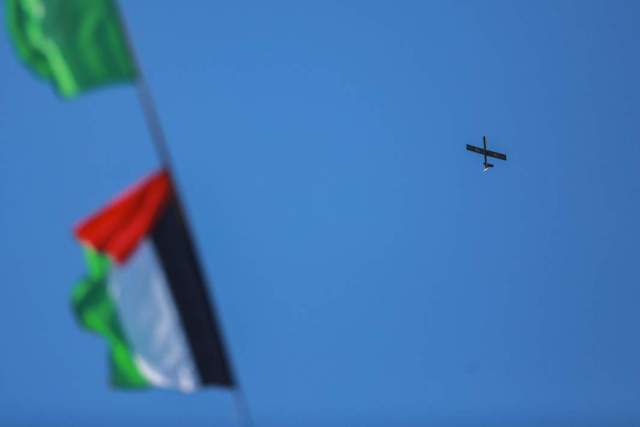
Photo: Global Look Press/Mohammed Talatene
Image source: iz.ru
Drones of this type, when used in combination with missiles and mobile combat groups, can be very effective, since either helicopters or short-range anti-aircraft systems ready for combat are needed to defeat them.
With a high probability, Iron Dome systems may not be as effective against these drones as against Quassam-type missiles. It is believed that during their development, Iranian engineers provided great assistance to the Palestinians — Iran's rather serious successes in creating entire families of kamikaze drones are known.
"Zuari" got its name in honor of the Tunisian engineer Mohamed Zuari, who in the ranks of the Palestinian brigades "Al-Qassam" in Syria was engaged in the creation and development of means of attack and in 2016 was killed by Israeli special services.
It cannot be said that Hamas could create and use high-tech and modern weapons systems. Of course, they are noticeably behind the world's best models in terms of their capabilities, but they are extremely inexpensive to produce and do not require expensive factories with space technologies. And one more point — these, in fact, artisanal, developments with complex application are sometimes very effective against high-tech Western and Israeli weapons systems. And therefore, they solve the tasks for which they were created, and perform their deadly role.
Dmitry Kornev
